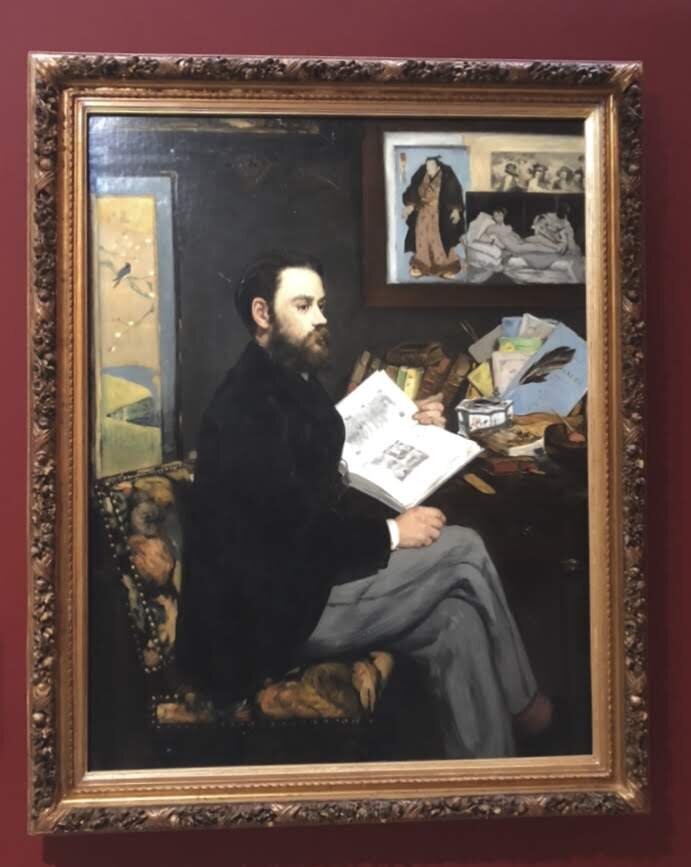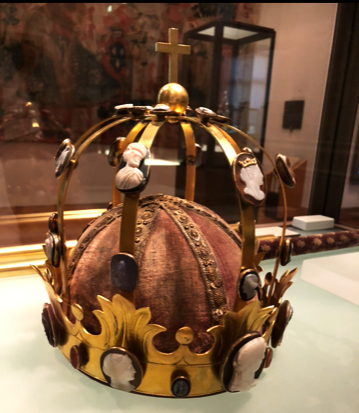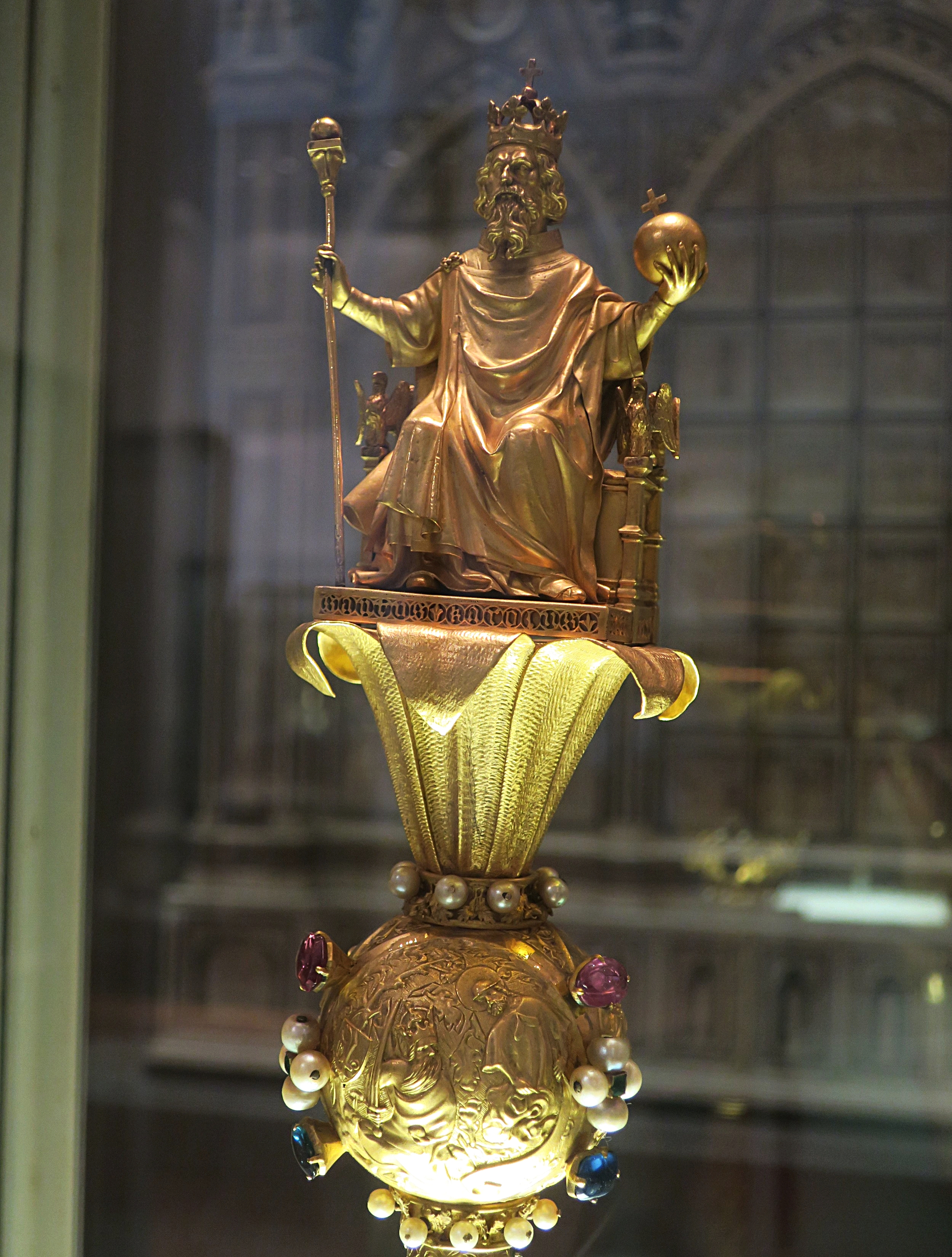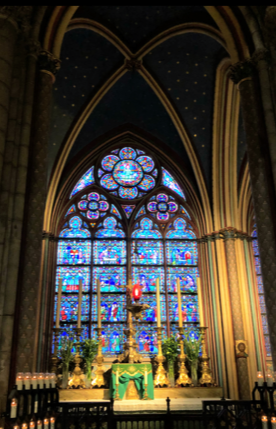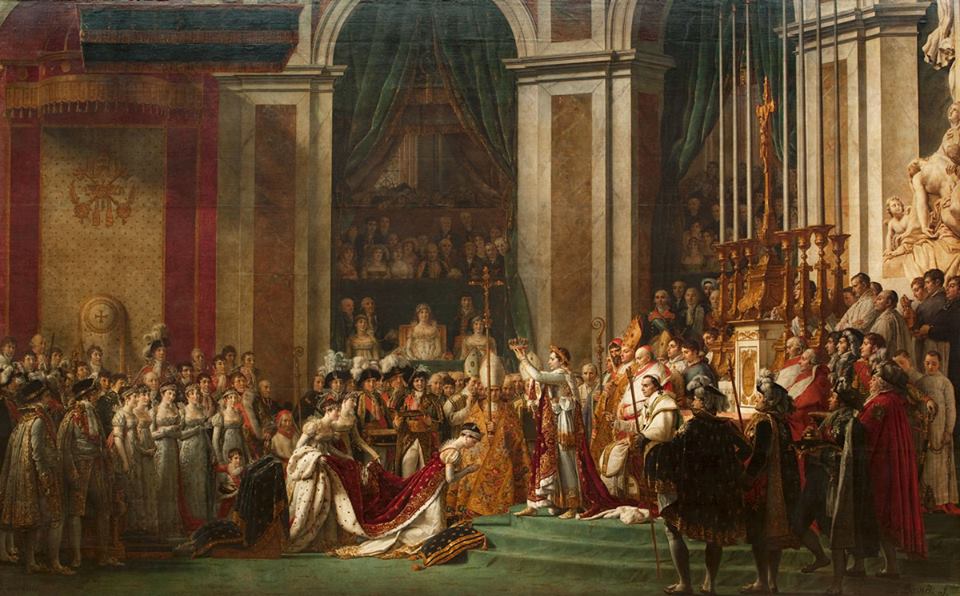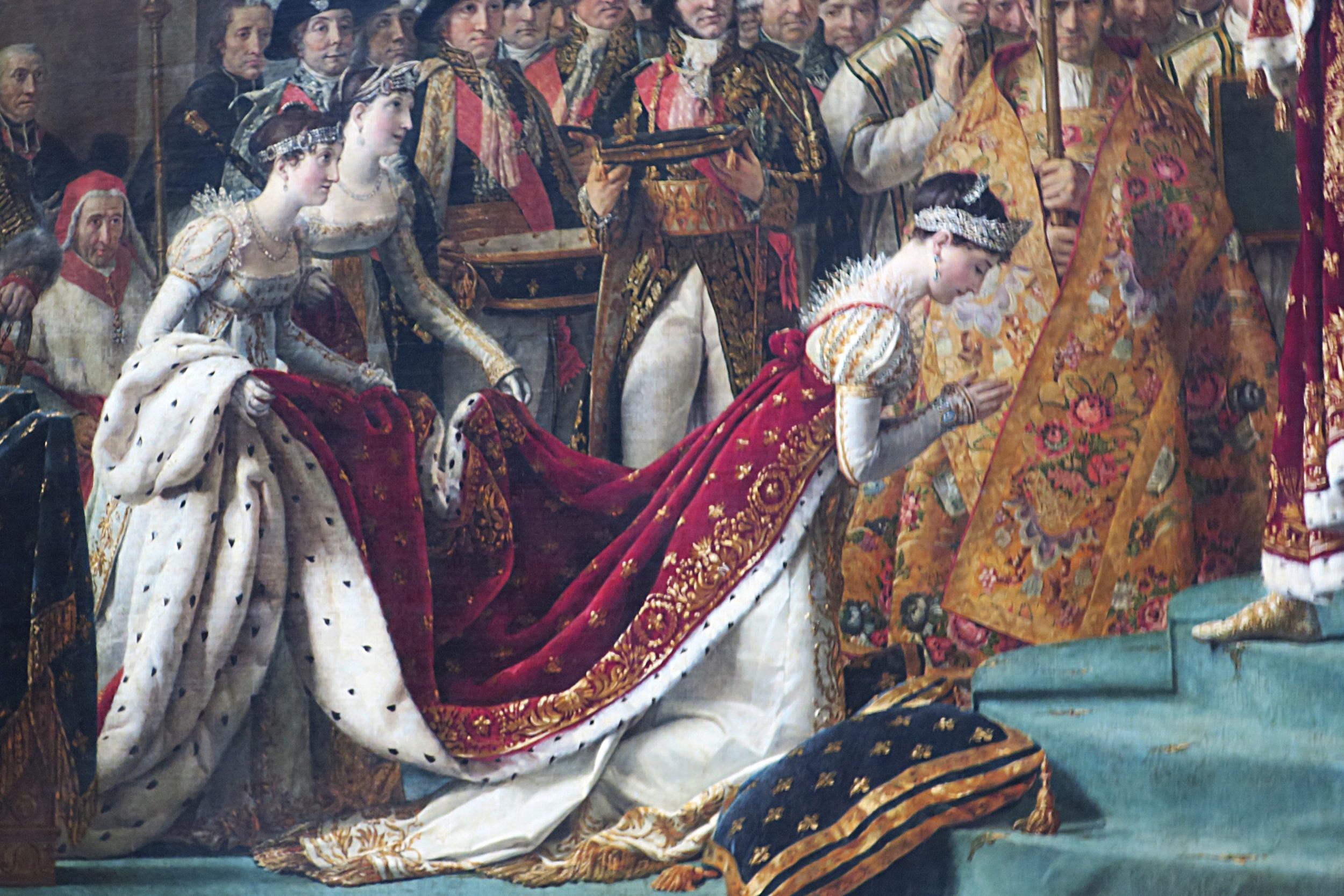One of my favorite things about the smaller rooms of museums is how the curators organize
the collection. Some rooms are dedicated to a single artist but the really cool ones are a mix of artists and when you really look you can see how each painting actually speaks to each other.
There is one specific room in the Musée d’Orsay that I love and it is because of the paintings in the room and how each one has their own amazing story but together they tell another story. On the ground floor of the Orsay in salle 12 you can find one of my favorite portraits, Berthe Morisot au Bouquet de Violettes by Manet. I have a lot of favorites and if you have done a tour with me I will mention it about 1000 times but if I had to pick my top five favorite paintings, this would be one of them.
I love the story of their friendship and how they met as she was a copyist in the Louvre and as soon as they met he wanted to paint her. Manet loved her dark looks and captured her for the first time in the painting just to the right. Le Balcon was painted in 1868 and Berthe is seen sitting holding a fan and looking off into the distance.
The next wall, Manet’s Madame Manet au Piano, which is his wife Suzanne Leenhoff who arrived into his family as a piano teacher for the young Manet. Next to her is La Lecture also by Manet that shows a lovely Suzanne in a billowy white dress, that also resembles back to Le Balcon and in the background is her son, Léon who is also in Le Balcon. To the right is Monet’s painting of his wife also on a couch.
James Tissot’s Portrait of Mademoiselle L.L. , another portrait of a very fashionable woman in her red jacket that pops from the wall. Back to the wall with Berthe that includes two Renoir’s Madame Darras and Jeune femme à la violette. Stand back and look at this wall and how they all are tied together and then look at the entire room and see how one theme leads to the next.
Check out my video I made sharing this room as well as Manet’s Olympia and then up to the Impressionist gallery. And if you are coming to Paris this fall, reach out for a tour, days are filling up fast. Check ClaudineHemingway.com
Also see video on my YouTube channel and subscribe.





















